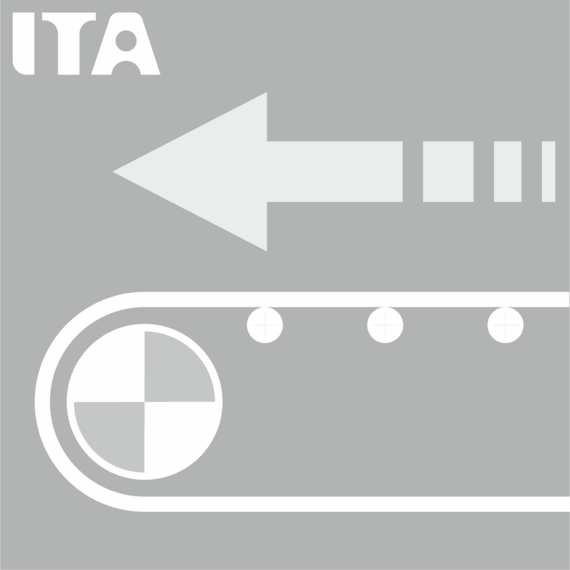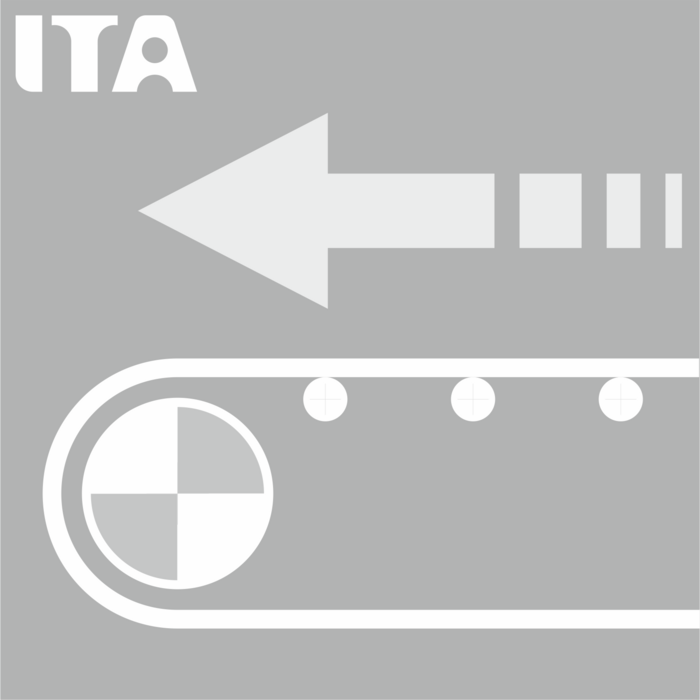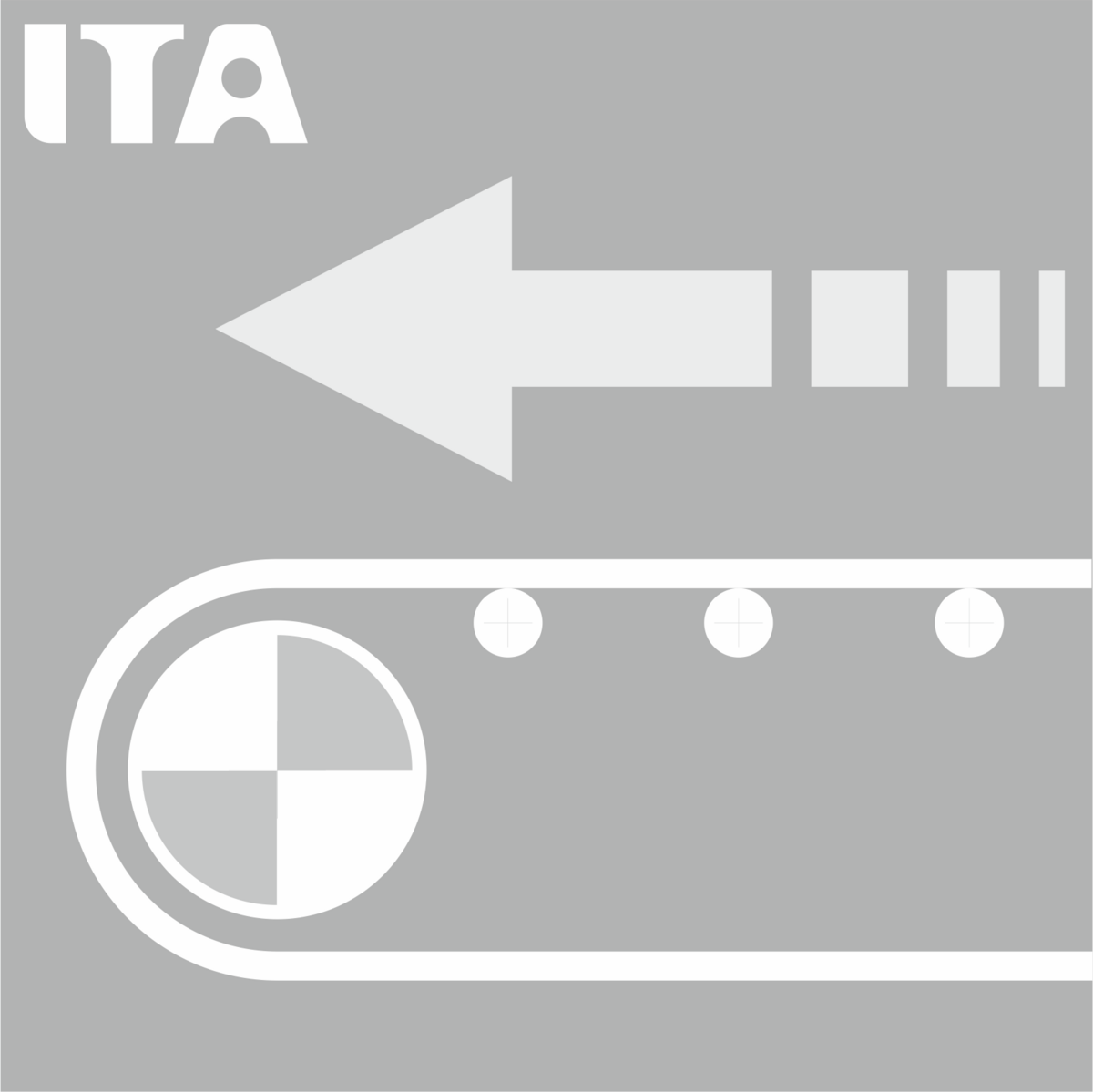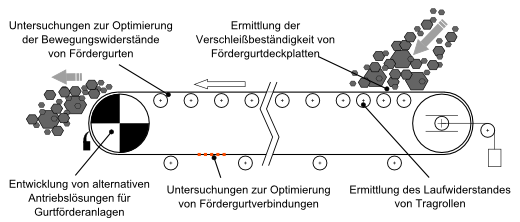Transport Technology
ITA is active in the various fields of internal and external material transport, especially in belt conveyor technology. Here, the focus is on the optimization of conveyor systems due to the increasing requirements resulting from ever increasing transport distances and the flexibility of intralogistic material flows.



Belt conveyor technology
At ITA, the components of a belt conveyor system are examined and investigated in detail as well as in combination within ongoing research activities. Not only are numerous tests, such as the fatigue strength testing of conveyor belt splices according to DIN 22110-3, offered by ITA, but also the further development of such belt splices by new manufacturing processes within current research projects. With regard to the service life of conveyor belts, the focus of our research activities is primarily on the resistance of conveyor belts to the abrasive wear caused by the bulk material fed into them and the associated cut resistance.
In order to increase the energy efficiency of conveyor systems, ITA analyses the occurring motion resistances. These include, for example, the indentation rolling resistance of a conveyor belt or the rolling resistance of an idler roller. In current research projects, alternative drive concepts for the operation of belt conveyors are being investigated and tested in order to optimize energy consumption.



Virtual vision enhancement in Transport Technology
One of the biggest challenges when operating a forklift truck is the driver's limited view of his surroundings, especially when storing and retrieving load carriers or transporting bulky loads.
The project "Virtual Visibility Improvement and Intuitive Interaction through Augmented Reality on Industrial Trucks" (ViSIER) provides for more safety when operating forklifts.
The overall system, jointly developed by the Institute of Transport and Automation Technology and the Institute for Integrated Production Hannover (IPH), forms the basis for a more intensive networking of driver, vehicle and environment by creating a cognitive technical system that significantly improves the driver's safety and decision-making ability.
Contacting the transport technology department


30823 Garbsen






















